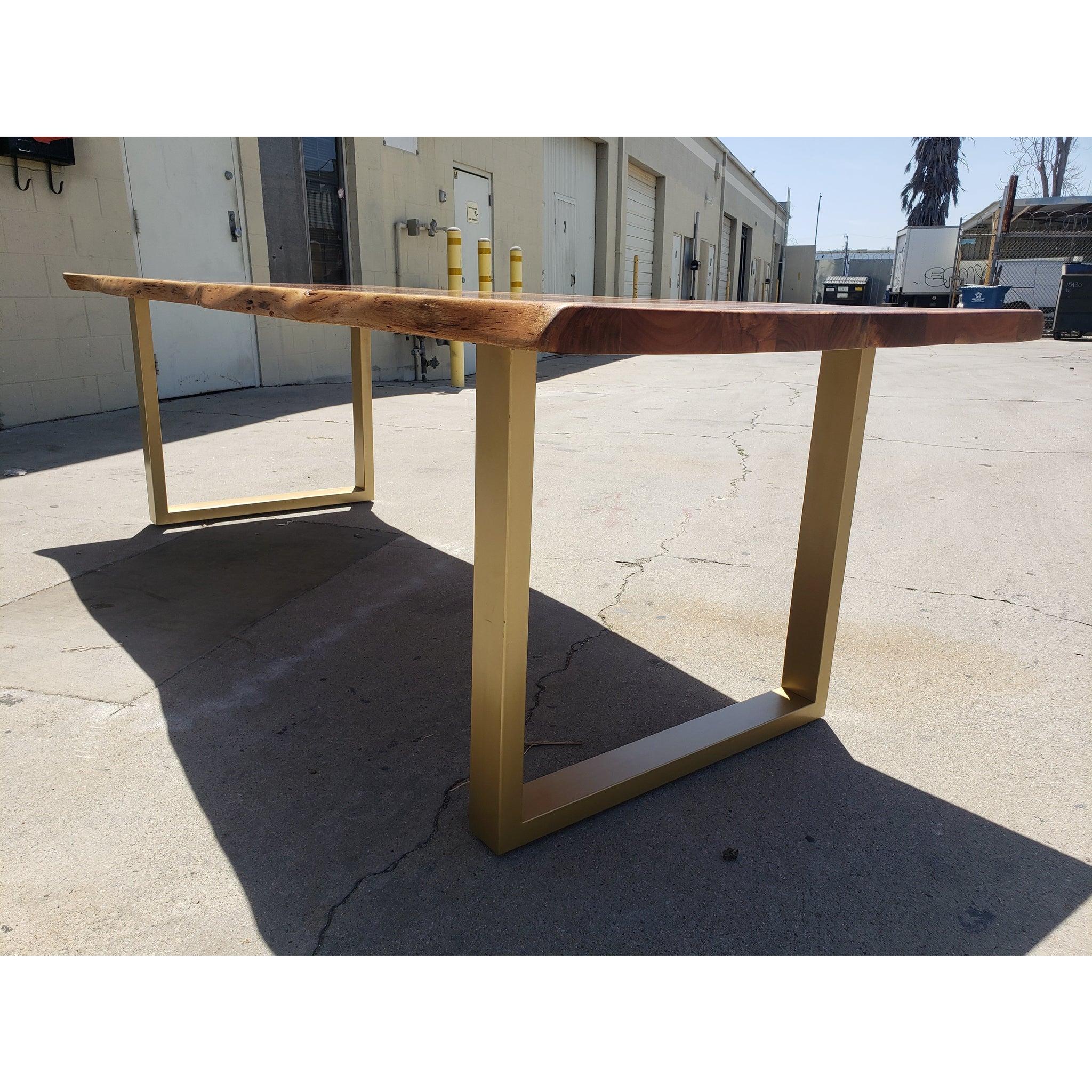Discovering the Different Types of Dining Table Legs Wood for Your Eating Area
The choice of eating table legs timber can greatly affect both the useful and aesthetic high qualities of your dining area. Strong wood choices, such as oak and walnut, give a classic look with unrivaled durability, while engineered wood alternatives provide ingenious layouts that resemble the richness of all-natural grains.
Strong Wood Options

Moreover, strong timber is renowned for its strength and durability. Unlike crafted products, solid timber is much less vulnerable to warping and damages over time when effectively preserved. This makes it an excellent selection for families or those who regularly organize events. Each item of solid wood is unique, showcasing individual characteristics that add to the appeal and character of the table.
Furthermore, strong timber can be finished in many ways, ranging from all-natural oils to stained coatings, permitting homeowners to customize their furniture to match their decor. In summary, choosing solid timber for dining table legs not only makes certain architectural integrity yet additionally improves the aesthetic appeal of the eating area, making it a rewarding investment for any home.
Engineered Timber Alternatives

Plywood, constructed from multiple layers of timber veneer, is secure and particularly strong, making it a superb option for eating table legs. Its layered structure permits it to endure adjustments in humidity and temperature level better than typical strong wood. MDF, on the other hand, uses a smooth surface for paint or veneering, making it possible for designers to achieve a sleek appearance while keeping structural integrity.
Particleboard, frequently made use of in economical choices, offers good strength and is lightweight, making it less complicated to deal with. It may not be as durable as plywood or MDF. It is vital to consider the designated usage and preferred visual when choosing crafted wood alternatives. These products not only enhance the capability of eating areas yet also permit better style adaptability, guaranteeing that modern and standard designs can coexist harmoniously.
Reclaimed Wood Includes
Redeemed timber uses an one-of-a-kind blend of sustainability and personality, making it an increasingly prominent choice for eating table legs. Sourced from old barns, manufacturing facilities, and other structures, recovered wood symbolizes he said a background that brand-new products simply can not reproduce. Each item lugs its own tale, noted by unique blemishes, knots, and differing grain patterns, which contribute to a table's unique aesthetic charm.
Along with its aesthetic appeal, recovered wood is an eco friendly alternative. By repurposing formerly used products, it minimizes the demand for brand-new lumber, hence aiding to conserve forests and minimize check it out waste. This aligns with a growing customer preference for lasting methods in furnishings.
Furthermore, reclaimed wood is often much more durable than freshly harvested timber because of its age. The natural drying out procedure that redeemed wood undertakes lead to a denser and more powerful material, making it much less susceptible to warping and splitting. This enhances the durability of eating tables, allowing them to hold up against the roughness of day-to-day use.
Softwood vs. Wood
When choosing eating table legs, understanding the differences between softwood and wood is essential for accomplishing both visual and functional goals. They typically display a more rustic appearance, making them appropriate for informal or country-style eating rooms.
On the various other hand, woods, sourced from deciduous trees like maple, oak, and cherry, are renowned for their density, strength, and toughness. The complex grain patterns and abundant shades of hardwoods offer a advanced and timeless charm, making them ideal for formal dining setups. While hardwoods have a tendency to be a lot more expensive and larger, their resilience against damage commonly validates the financial investment.
Eventually, the selection between softwood and wood for dining table legs should line up with your design vision, use demands, and spending plan, ensuring that your eating space mirrors your individual style while continuing to be functional over time.

Treatments and finishes
The aesthetic charm and durability of table legs can be considerably improved through various finishes and treatments. These procedures not just secure the wood from damage however additionally raise its appearance, allowing it to complement varied indoor designs.
One common treatment is discoloring, which penetrates the wood and boosts its natural grain while including shade. Spots provide an abundant, classy appearance, allowing home owners to match their furnishings with existing design. Conversely, clear finishes such as polyurethane or varnish create a safety layer without altering the wood's original tone, making certain longevity versus deterioration.
In addition, natural oils, like tung or linseed oil, nourish the timber and provide a refined luster, all while being environmentally friendly. These oils permit the surface area to breathe, preventing dampness buildup and possible bending.
For those looking for a rustic charm, weathered or troubled finishes can be related to produce an aged appearance, adding character to the item. Eventually, the choice of coatings and treatments relies on personal choice, desired aesthetics, and the particular wood type, making it important to consider these aspects when picking table legs for your space.
Final Thought
Strong woods, engineered alternatives, and reclaimed options each deal distinctive advantages, catering to various choices and needs. Eventually, the option of wood kind should align with desired design, resilience, and environmental considerations, enhancing the overall eating experience.
The selection of eating table legs timber can exceptionally affect both the visual and practical high qualities of your dining wikipedia reference area - Dining Table Legs Wood. Strong timber choices, such as oak and walnut, offer a timeless look with unrivaled sturdiness, while crafted timber choices offer innovative designs that resemble the splendor of natural grains. Solid wood supplies a classic quality that can elevate the total style of a dining area. Each piece of strong wood is distinct, showcasing individual features that add to the appeal and personality of the eating table
Moreover, redeemed wood is frequently much more resilient than newly gathered wood due to its age.